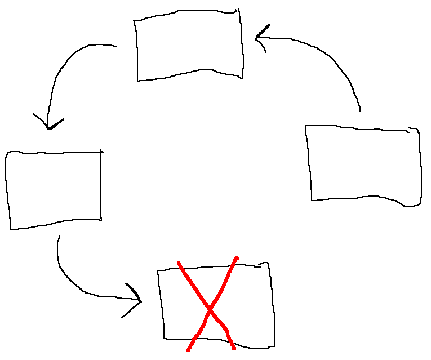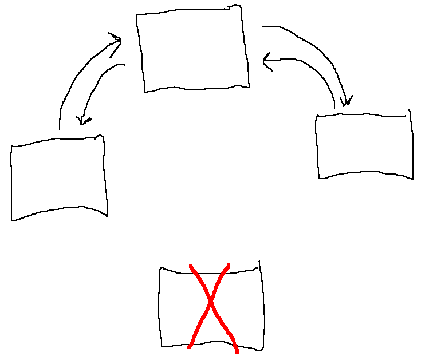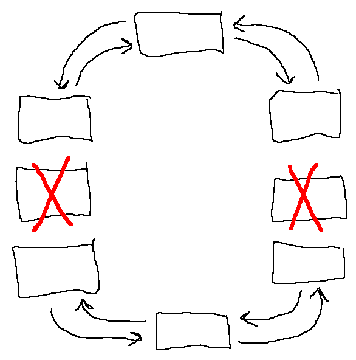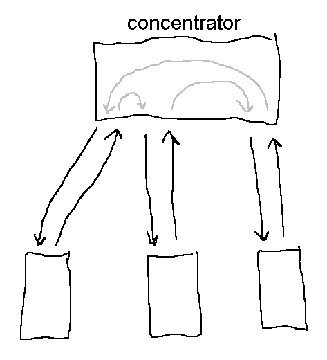
Unlike Ethernet, FDDI (Fiber Distributed Data Interface) is a ring and works by token-passing. In its most classic form, it is actually two counter-rotating rings, one main and one spare, formed by daisy-chaining machines together. Each machine has two connections to the ring (dual-attach stations, or DAS), each consisting of two fibers (Rx and Tx). A single daisy-chained ring could be taken out of action by a single machine failure:

The dual ring architecture compensates for this. If one machine fails, the machines on either side notice and "wrap", using the secondary ring to restore connectivity:

Even so, you've still got a problem if two machines fail:

For this reason, FDDI can operate in other topologies that compensate for these weaknesses. Many are complicated enough to make your head explode. We won't be getting into those here.
As a home user, if all your equipment is DAS, or you're willing to only buy DAS equipment, you're set. You can just set up a dual ring and go. Be aware that due to the physical size of FDDI connectors, DAS cards can be difficult to get for some bus types. So, if you want to be able to use single-attach (SAS) equipment, or you have machines which may be powered down frequently, you'll want to get a concentrator. With a concentrator, FDDI looks a lot like twisted-pair Ethernet with a hub, and for the same reason: if a single machine fails, the damage is normally limited to that machine. Even if it fails spectacularly, it can be disconnected from the rest of the network by simply detaching a single cable.

All text and pictures copyright (c) 2003 James Birdsall.